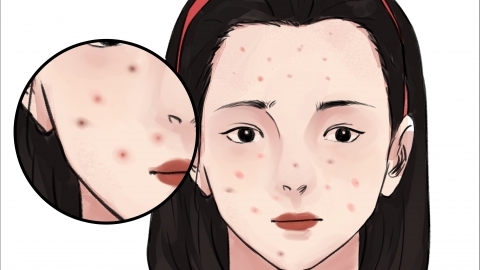How to repair acne marks, acne pits, and acne scars on the face
Acne marks, pitted acne scars, and acne scars on the face may be caused by improper skincare, overactive sebaceous glands, hormonal imbalances, polycystic ovary syndrome (PCOS), or folliculitis, and can be improved according to the specific situation. It is recommended to visit a hospital promptly and undergo treatment under a doctor's guidance.

1. Improper Skincare: Improper skincare habits or irritants may damage the skin barrier, leading to skin sensitivity and inflammation, which can result in acne. After the inflammation heals, poor skin repair may lead to the formation of acne scars and marks. Discontinue the use of potentially irritating skincare products and choose mild, non-irritating alternatives.
2. Overactive Sebaceous Glands: Hormonal fluctuations during puberty may cause the sebaceous glands to excessively secrete oil, clogging pores and triggering acne, which may lead to acne marks and scars. Use topical products containing ingredients such as salicylic acid or benzoyl peroxide to help clear pore blockages and reduce sebum production.
3. Hormonal Imbalance: Endocrine disorders, particularly elevated androgen levels, can stimulate excessive sebum production, promoting acne development. Hormonal imbalances may also impair the skin's healing ability, making acne marks persistent. Apply topical skincare products containing vitamin C, such as vitamin C serums, to help fade acne marks.
4. Polycystic Ovary Syndrome (PCOS): This condition is often related to environmental and metabolic factors. Hormonal changes may lead to recurrent acne and the formation of acne marks and scars, often accompanied by symptoms such as menstrual irregularities and excessive body hair. Follow medical advice for the use of medications such as dydrogesterone tablets, letrozole tablets, or bromocriptine mesylate tablets.
5. Folliculitis: Bacterial or fungal infection of hair follicles can cause localized inflammatory reactions, damaging the surrounding tissue and resulting in acne. If the inflammation is severe, skin indentation (acne scars) or pigmentation (acne marks) may occur during the healing process, possibly accompanied by symptoms such as redness, pain, and pus-filled blisters. It is recommended to use medications such as mupirocin ointment, ketoconazole cream, or fusidic acid sodium ointment under a doctor's guidance to alleviate discomfort.
During treatment, patients should remain patient and confident, following the doctor's recommendations for treatment and skincare. At the same time, maintaining healthy lifestyle habits and a positive mindset, and avoiding excessive anxiety and impatience, are also important.






